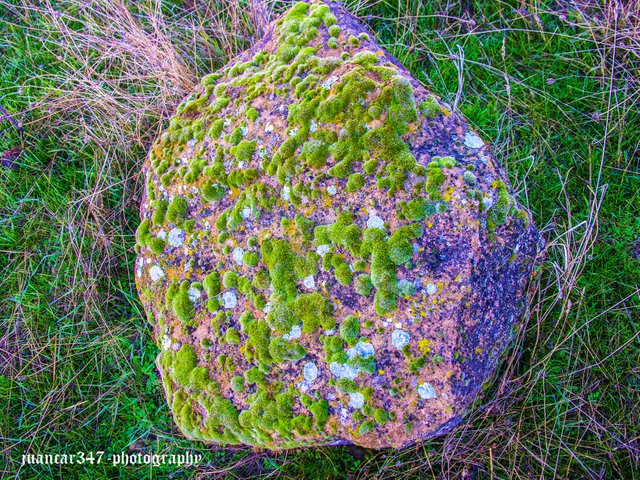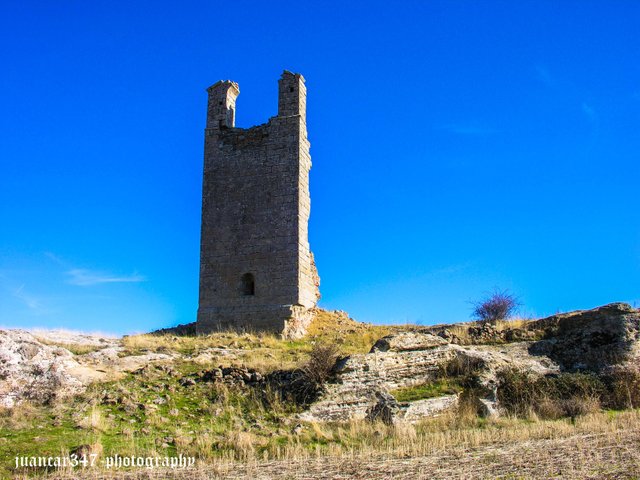
You can still see, in those endless moors that form the natural border between Guadalajara and Soria, those same plains that, when I was in primary school, still represented the Two Castillas, the New and the Old, respectively, ghostly stumps that call the traveler's attention to towns that were definitively erased from the face of the earth.
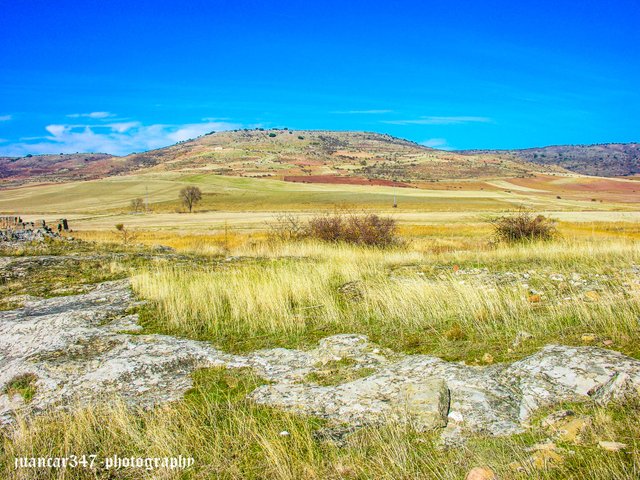
What killed the cat, that is, curiosity, present in all fables and all popular advice, may not be enough to prevent the bribery of prudence and prevent the traveler from momentarily deviating from the monotonous country road he has been traveling alone for hours, to undertake the adventure of walking in circles around an extremely melancholic landscape, where he will come across a cemetery honored by time, but inevitably plundered by the terrible greed of those two-legged vultures that are some human beings.
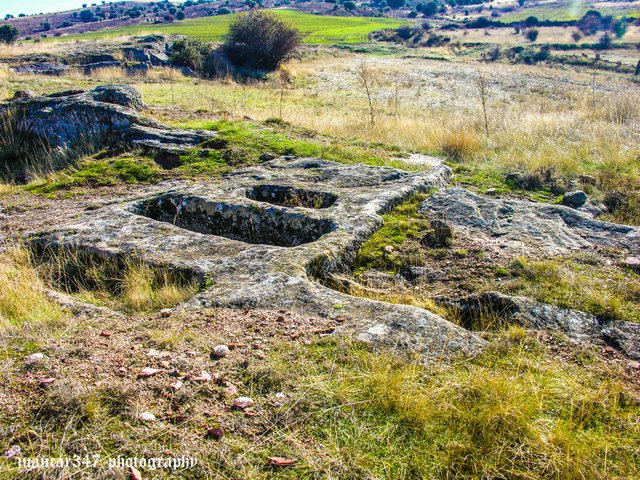
Like the rest of the town, the only thing spared by the wind was a simple wall of the parish church, which, judging by the shape of the ashlars and some curious stone symbols accompanied by typical graffiti—not those of pilgrims, but rather those of ordinary people—denotes ancient Romanesque origins, which also justify these anthropomorphic tombs, which, according to some fiction writers, such as Tim Powers, were made from the same material from which the terrible and mythological Graeae were made: stone.
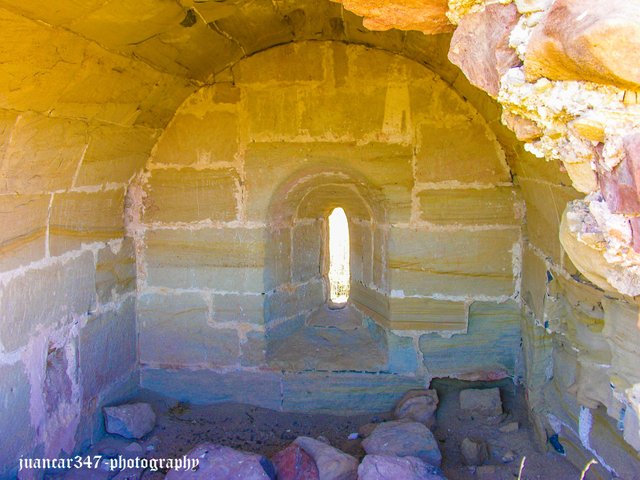
Todavía pueden verse, en esas infinitas parameras que determinan la frontera natural entre Guadalajara y Soria, aquellas mismas, que, cuando un servidor cursaba sus estudios primarios, todavía representaban a las Dos Castillas, la Nueva y la Vieja, respectivamente, muñones fantasmales que reclaman la atención del viajero hacia pueblos que fueron definitivamente borrados de la faz de la tierra.
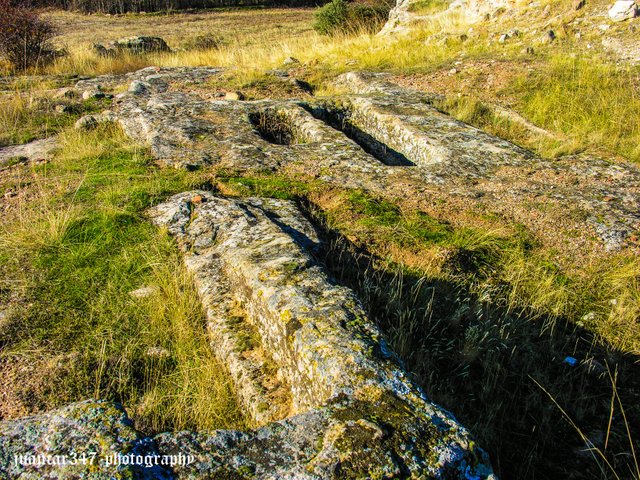
Lo que mató al gato, es decir, la curiosidad, presente en todas las fábulas y en todos los consejos populares, posiblemente no sea suficiente para impedir el soborno de la prudencia y hacer que el viajero no se desvíe momentáneamente de la monótona carreterilla comarcal que lleva horas transitando en solitario, para acometer la aventura de caminar en círculos alrededor de un paisaje extremadamente melancólico, donde toparse con un cementerio respetado por el tiempo, pero inevitablemente saqueado por la terrible avidez de esos buitres de dos piernas que son algunos seres humanos.
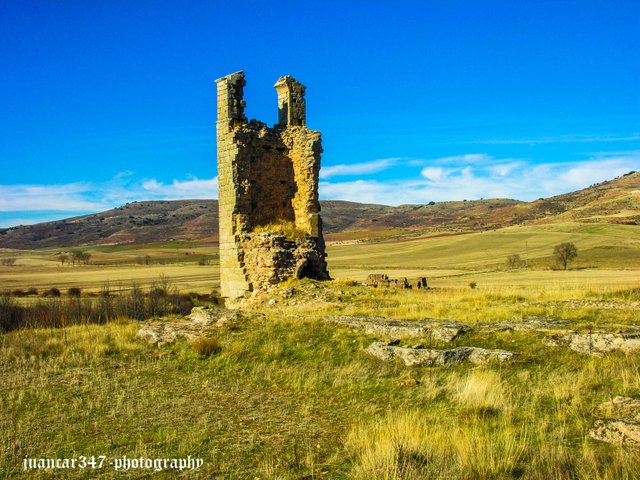
Como el resto del pueblo, lo único que no se llevó el viento fue un simple muro de la iglesia parroquial, que, a juzgar por la forma de los sillares y por algunos curiosos símbolos lapidarios a los que acompañan los típicos graffiti, no de peregrino, pero sí de pelagatos, denotan unos antiquísimos orígenes románicos, que también justifican esas tumbas antropomorfas, que, según la opinión de algunos escritores de ficción, como Tim Powers, se realizaron sobre la materia de la que estaban hechas las terribles y mitológicas Grayas: la piedra.
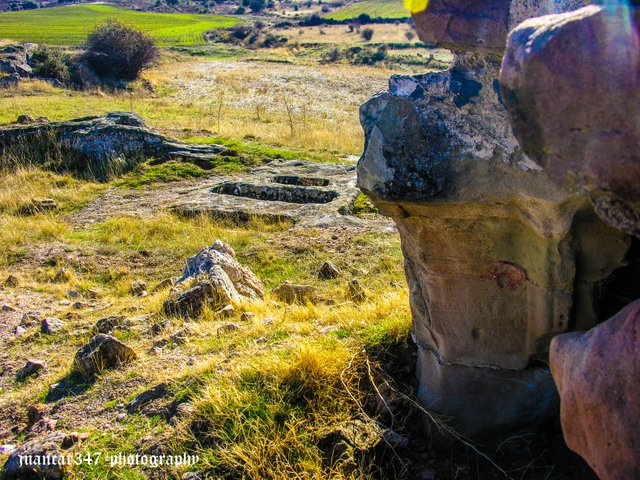
NOTICE: Both the text and the accompanying photographs are my exclusive intellectual property and are therefore subject to my copyright.
AVISO: Tanto el texto, como las fotografías que lo acompañan, son de mi exclusiva propiedad intelectual y por lo tanto, están sujetos a mis Derechos de Autor.
